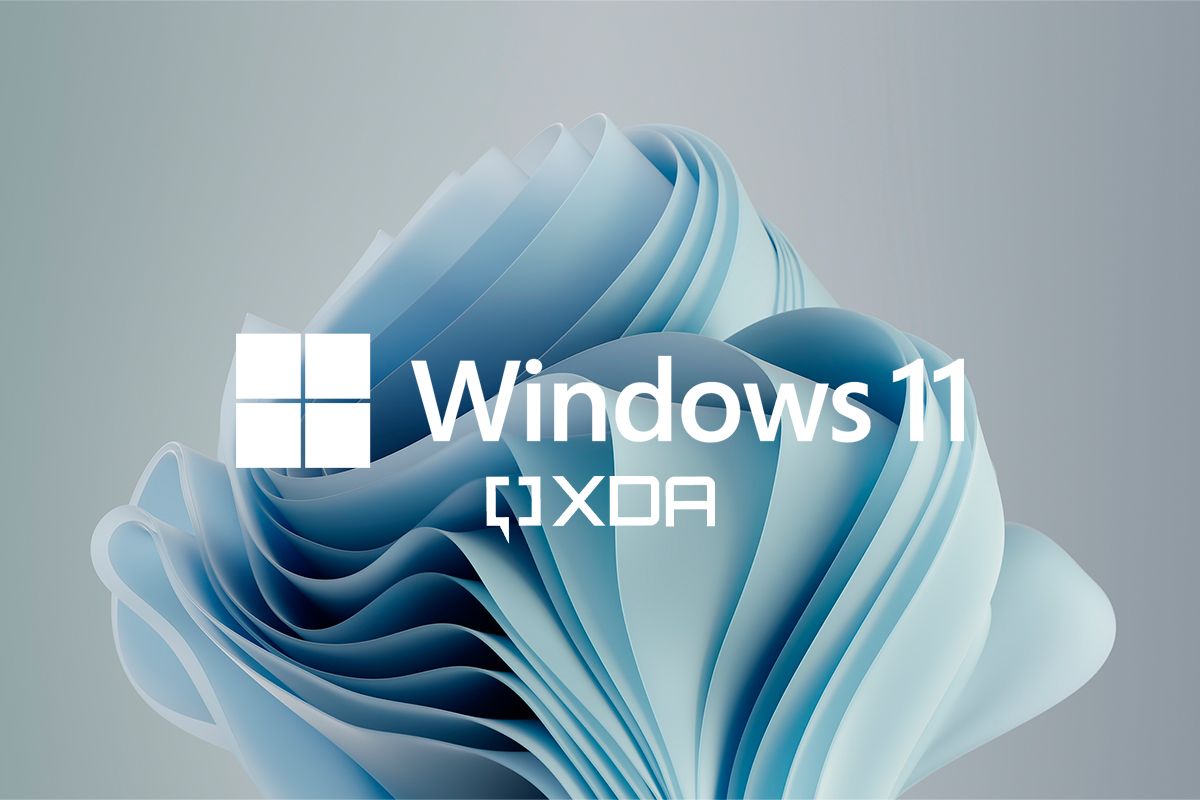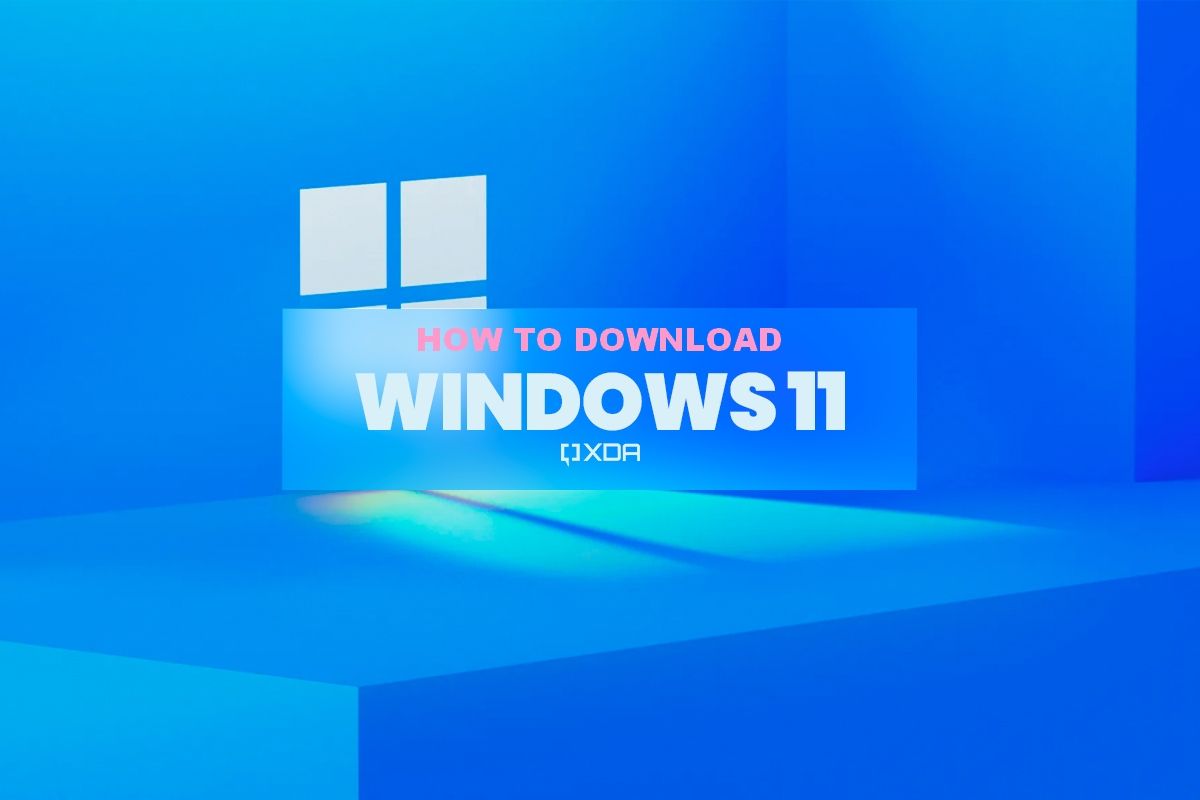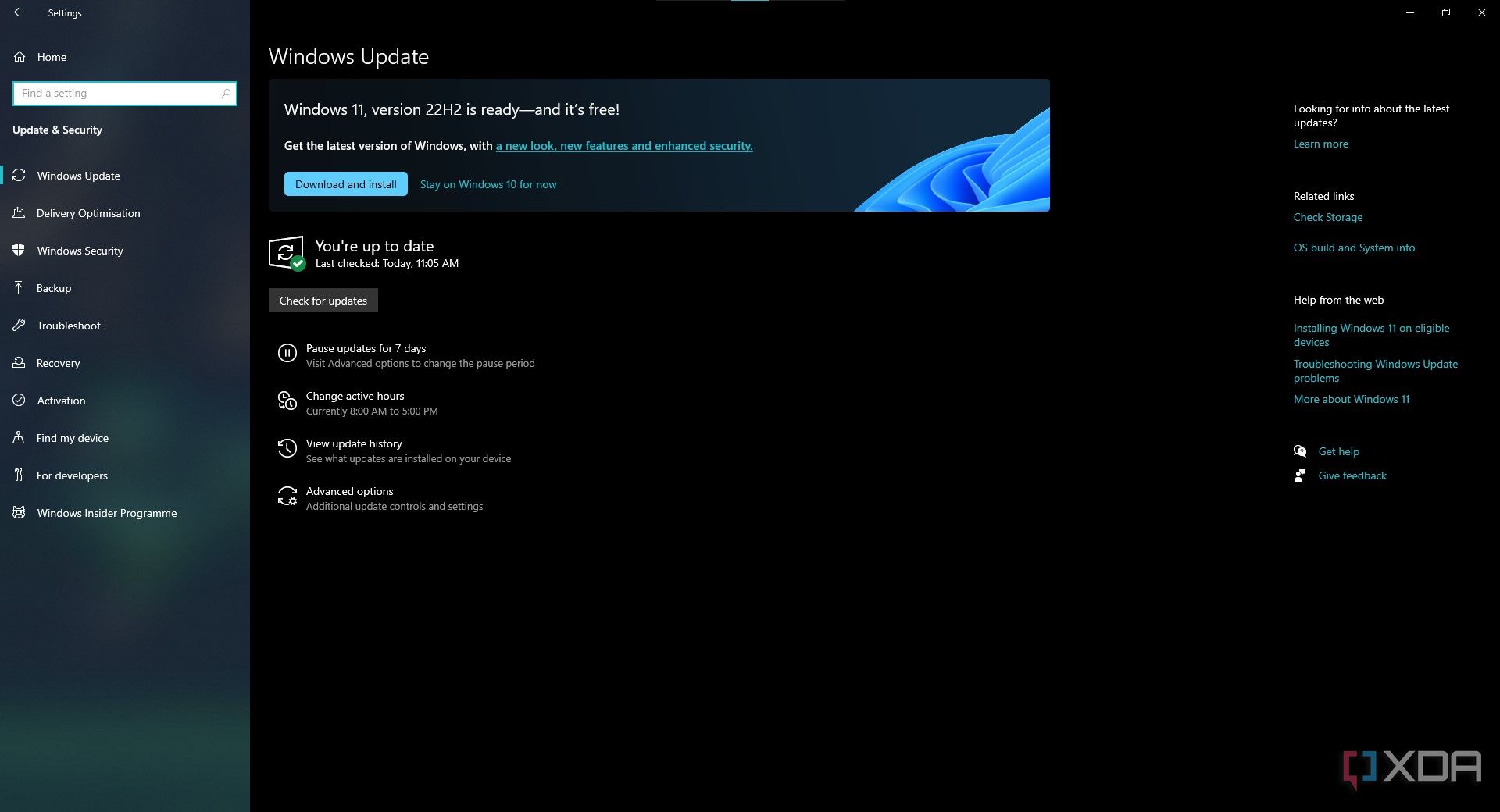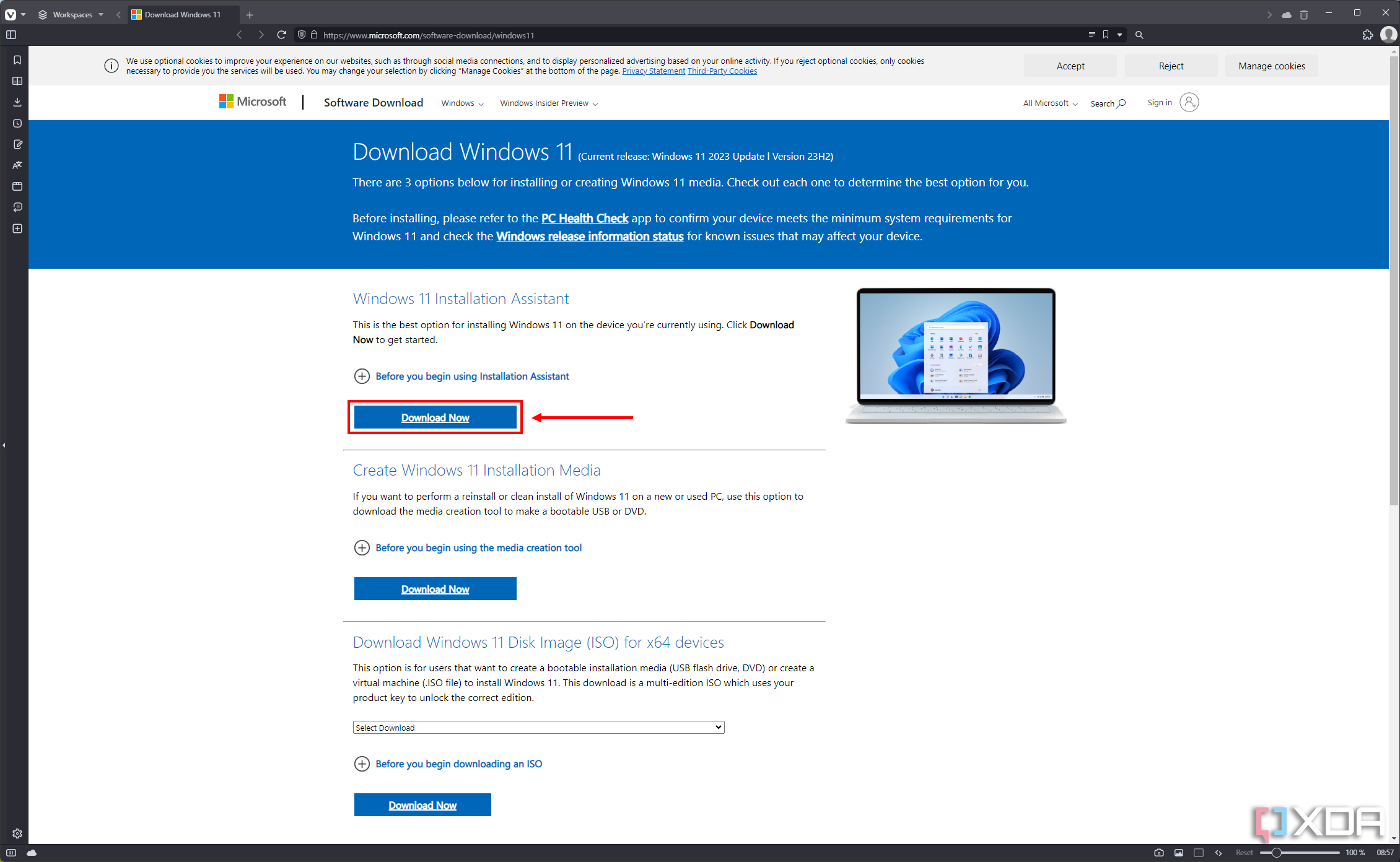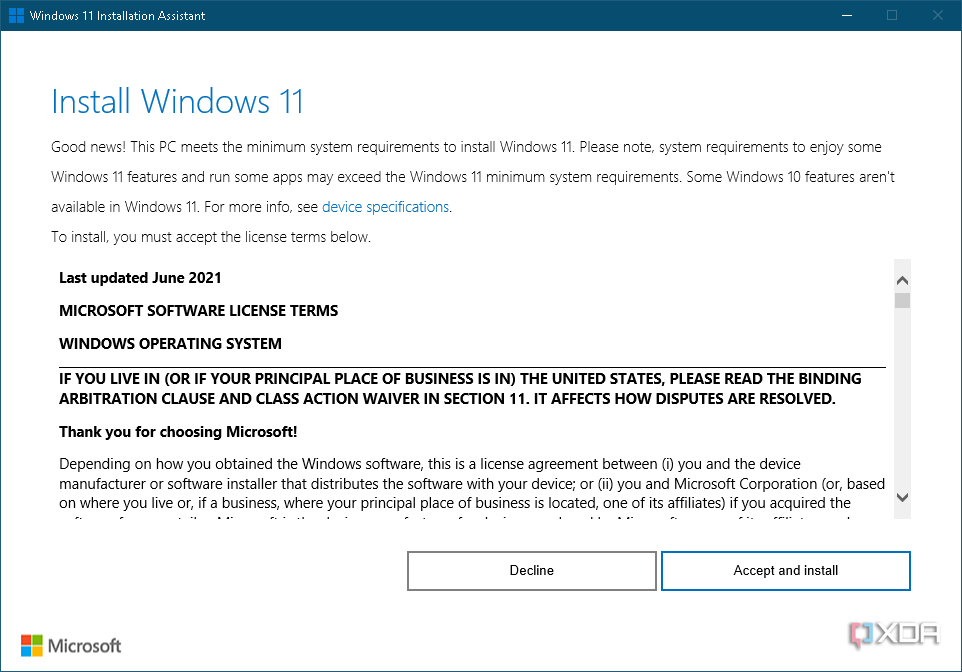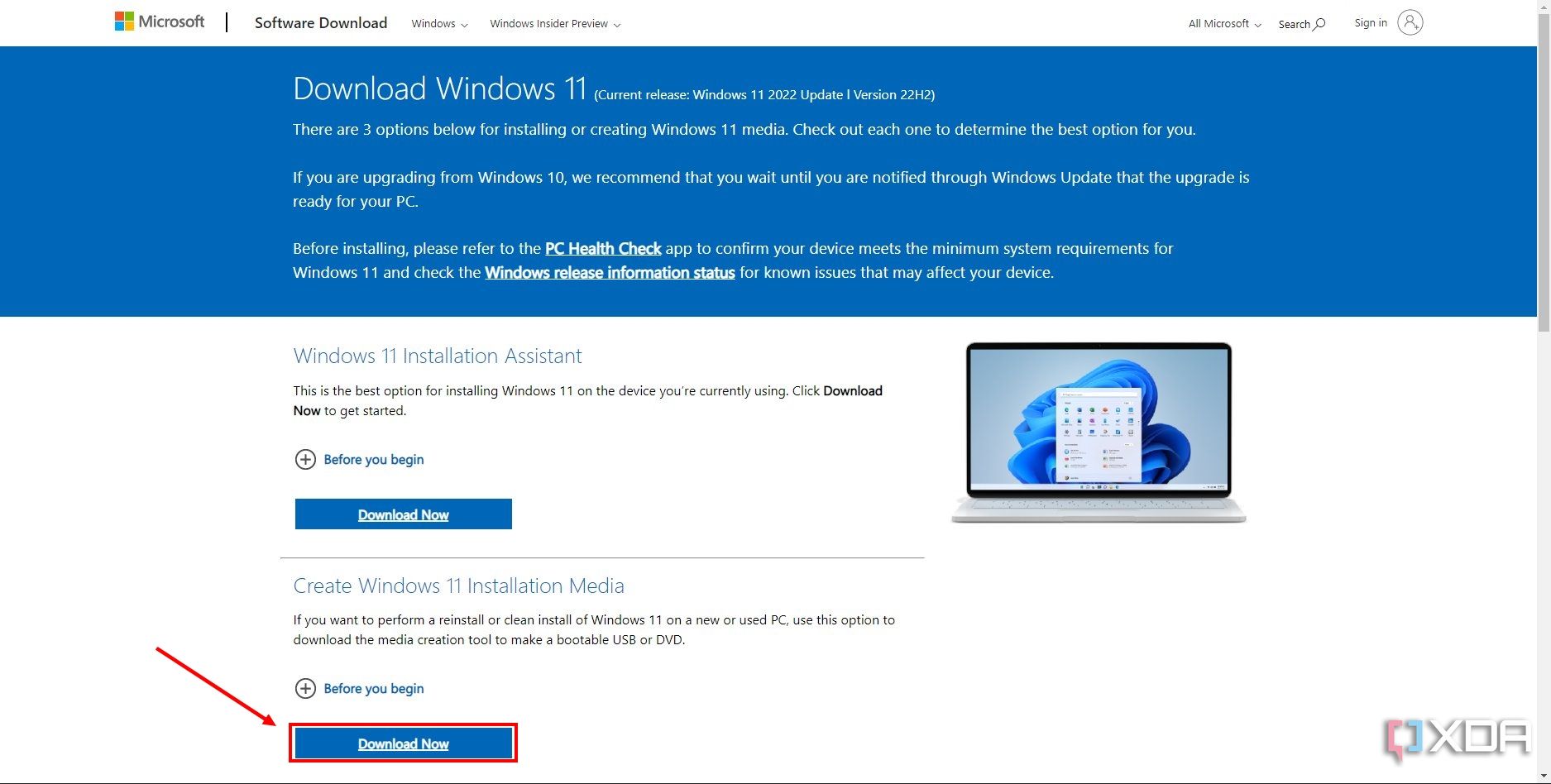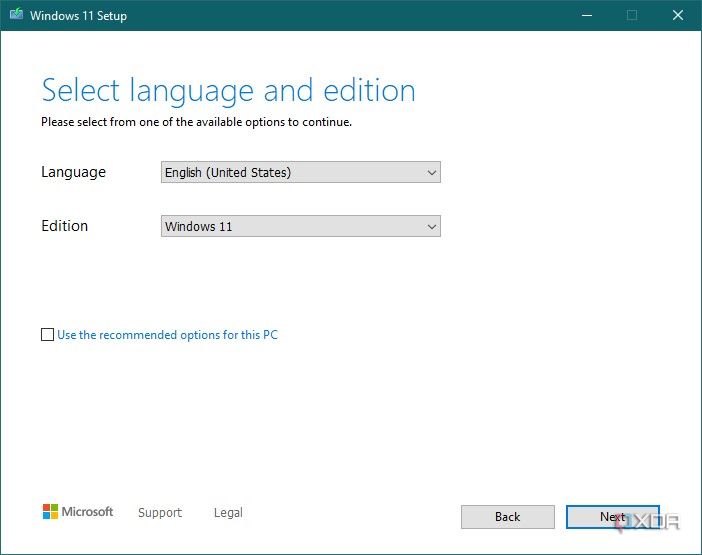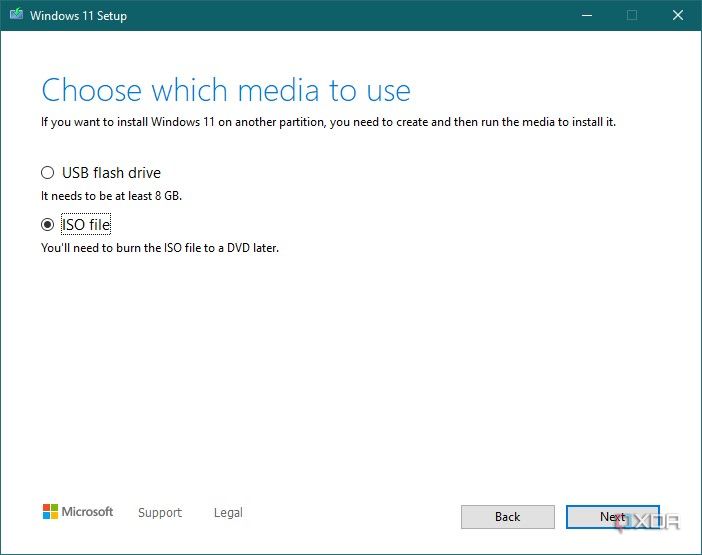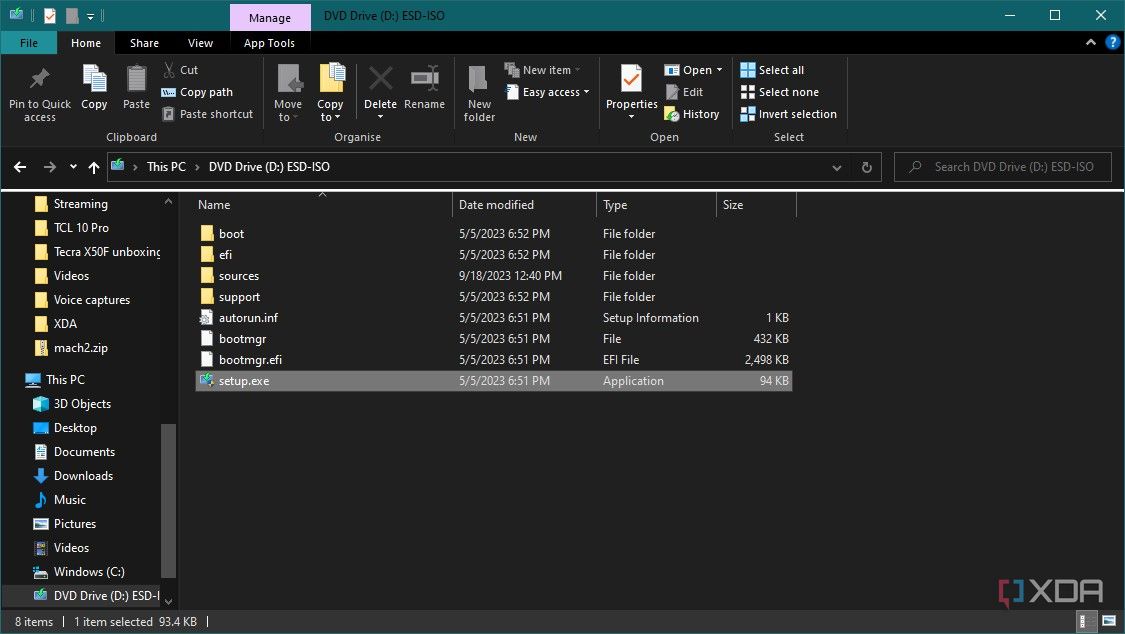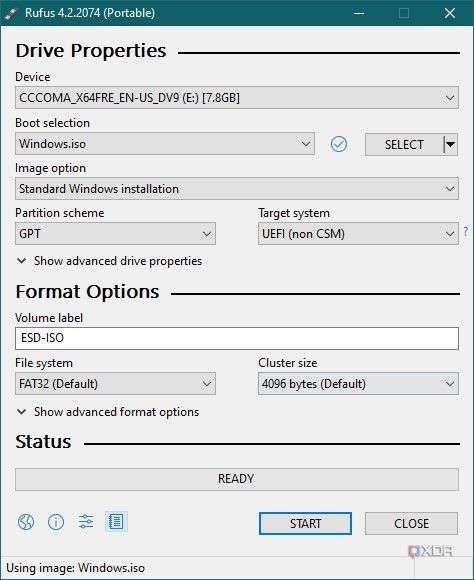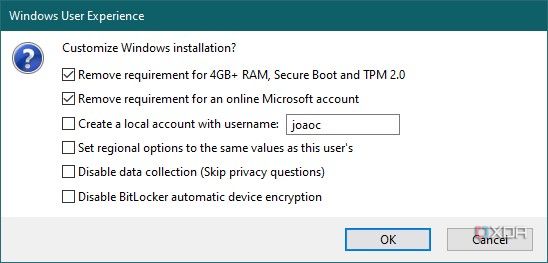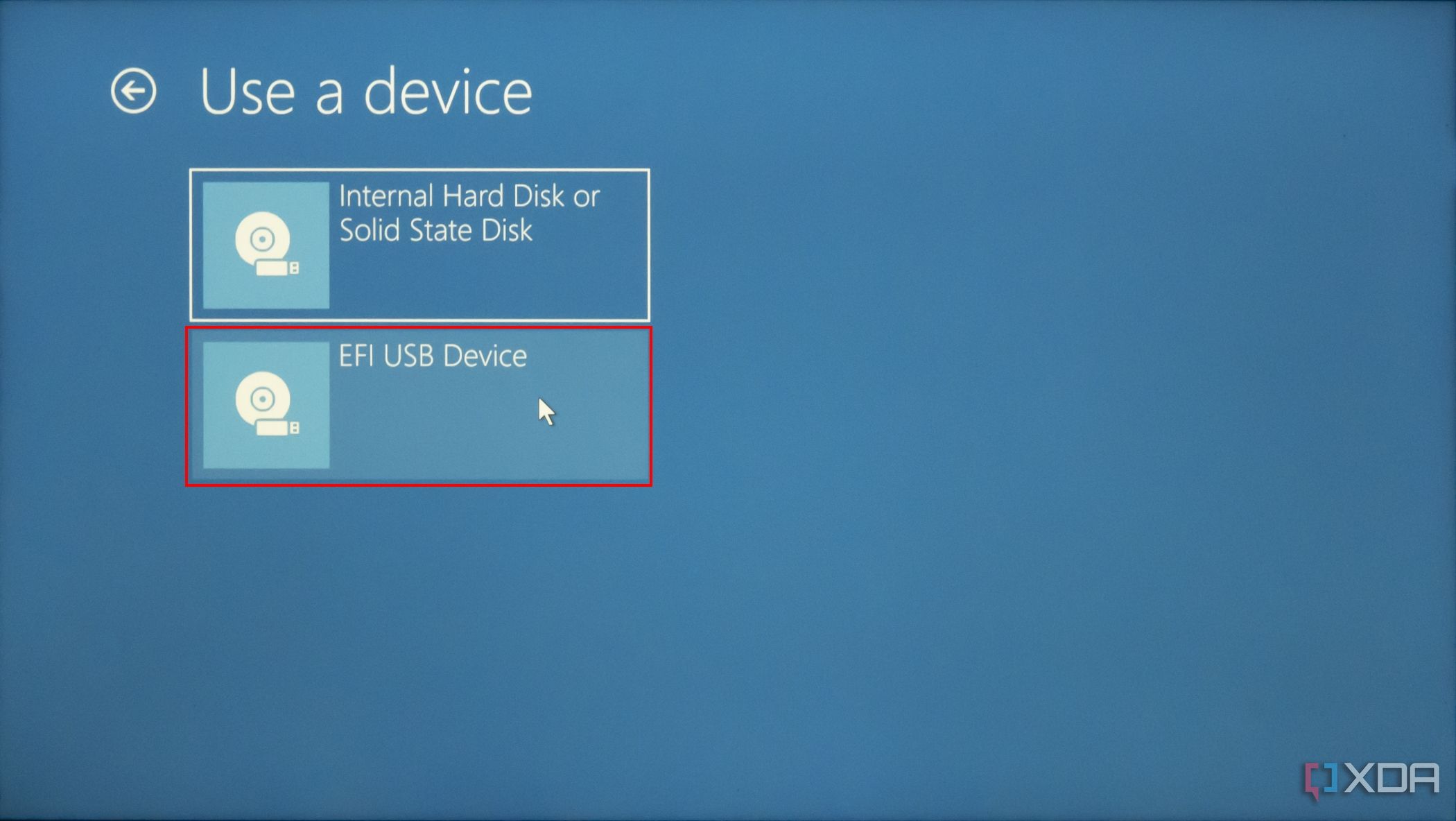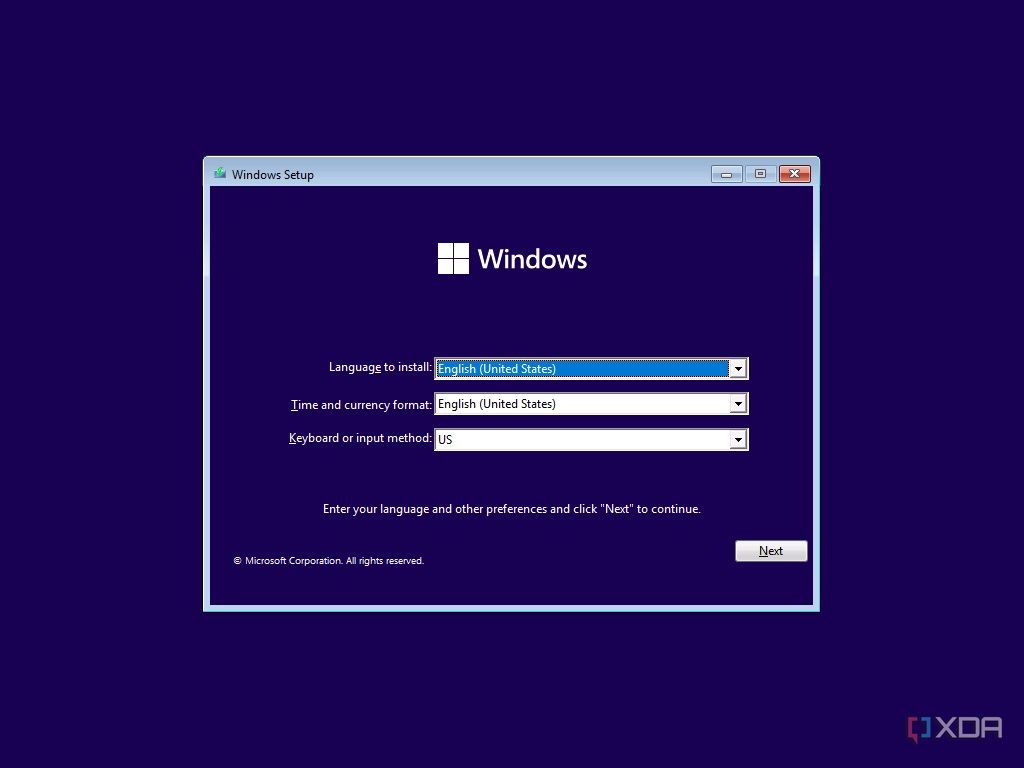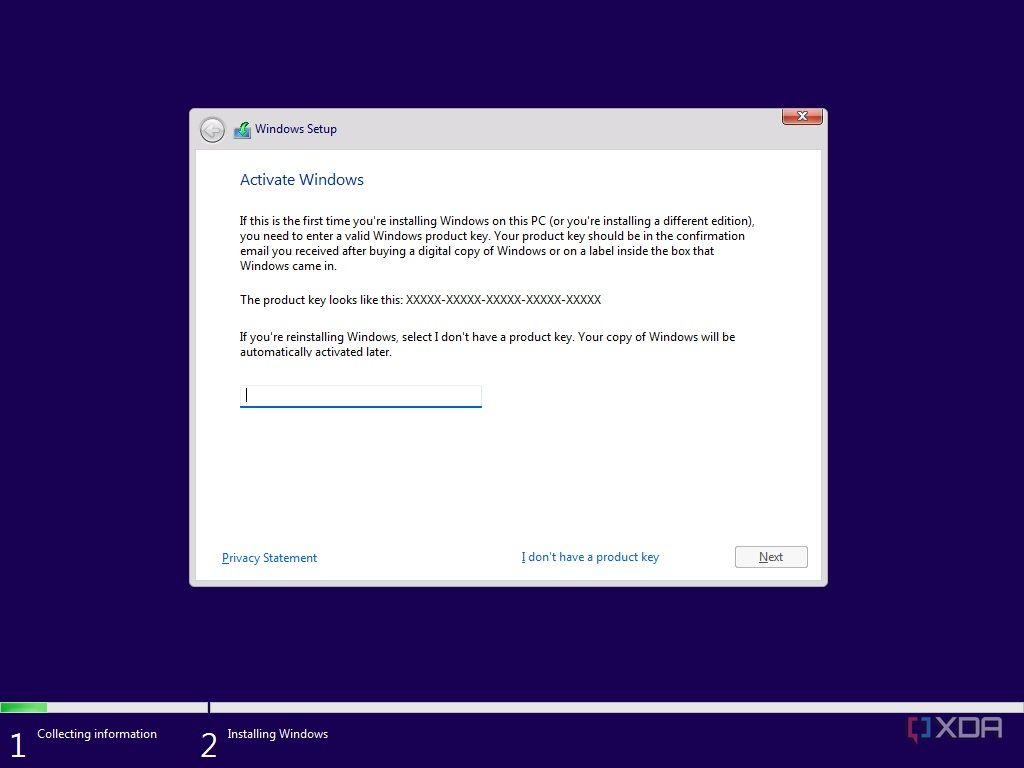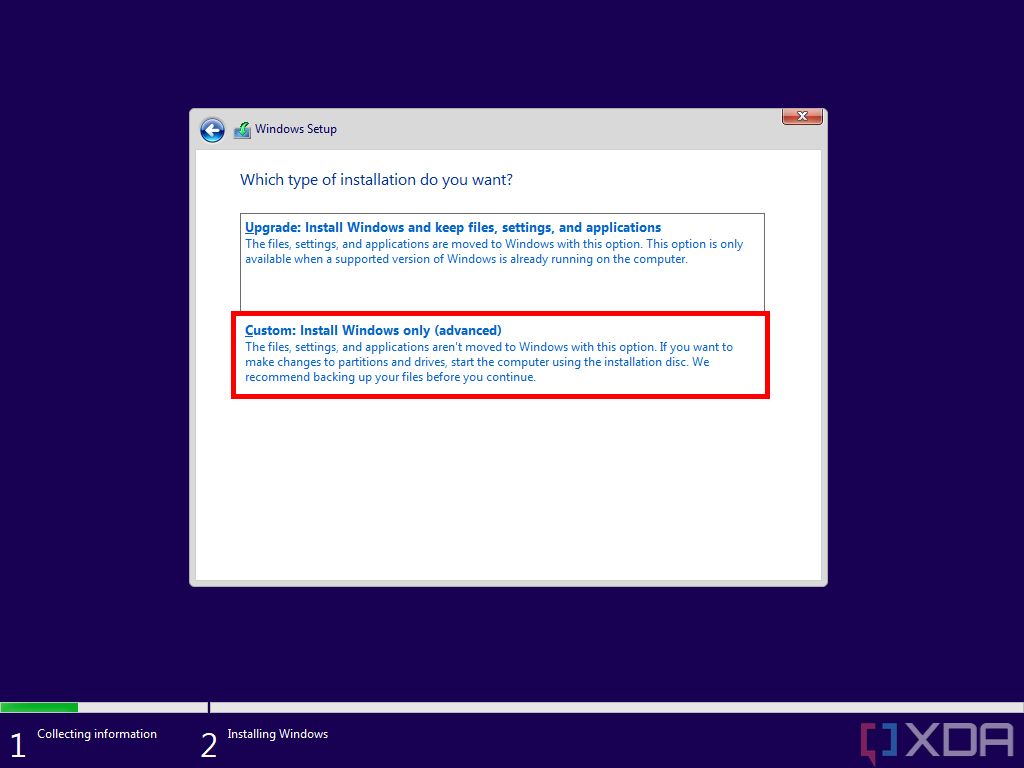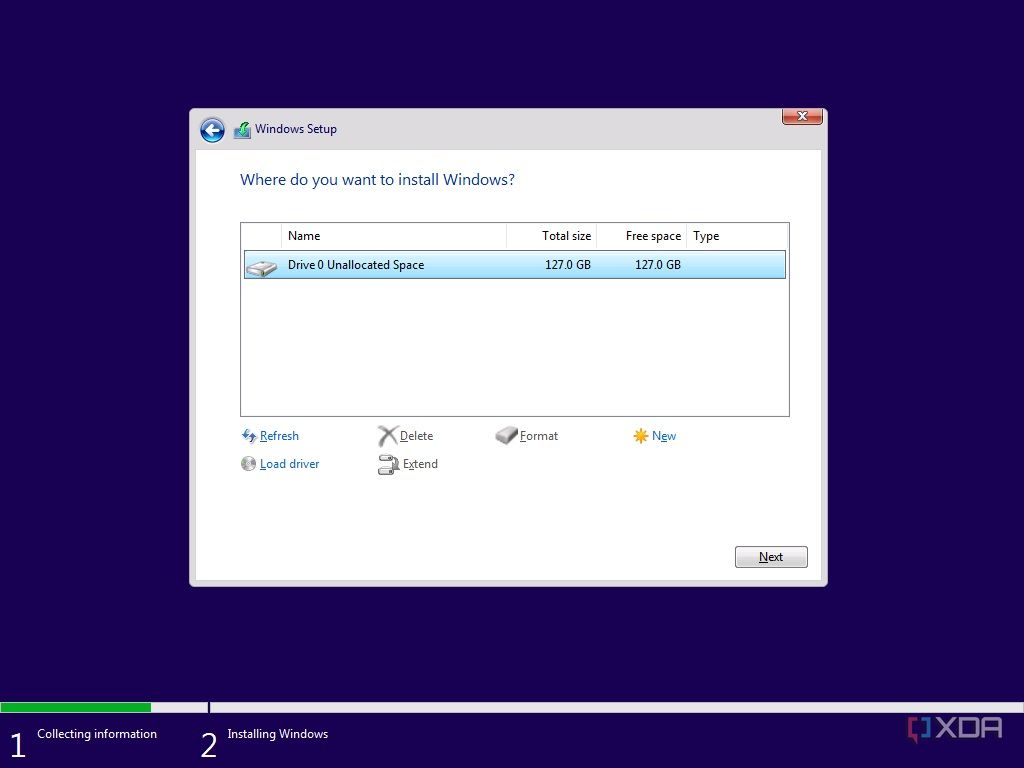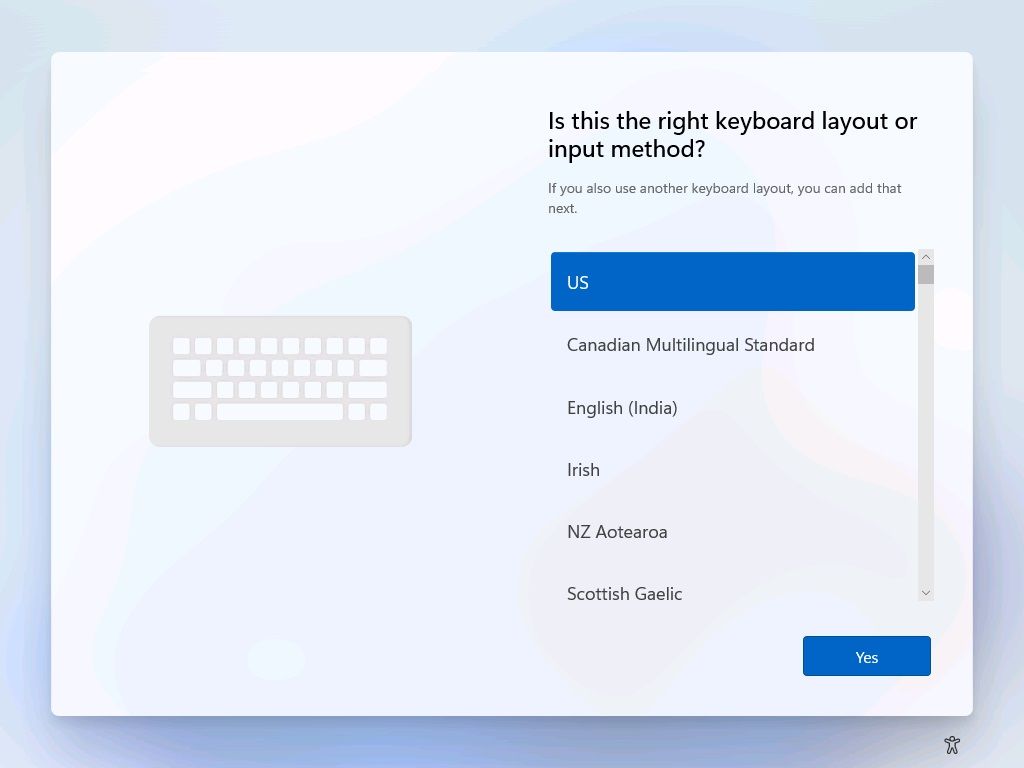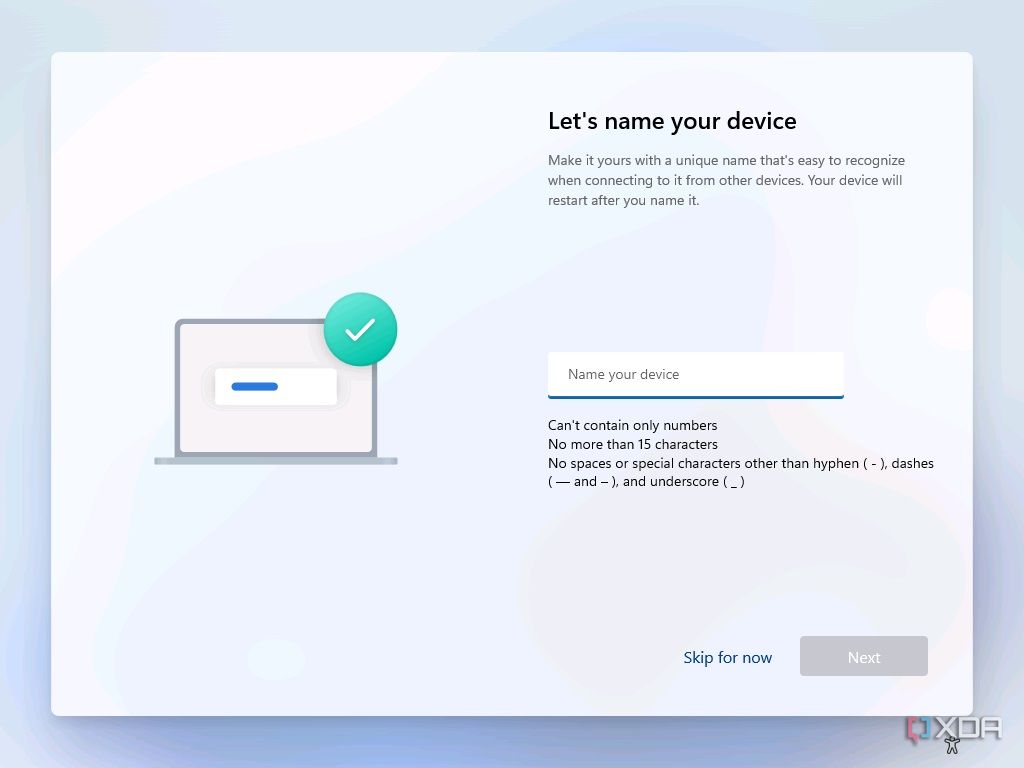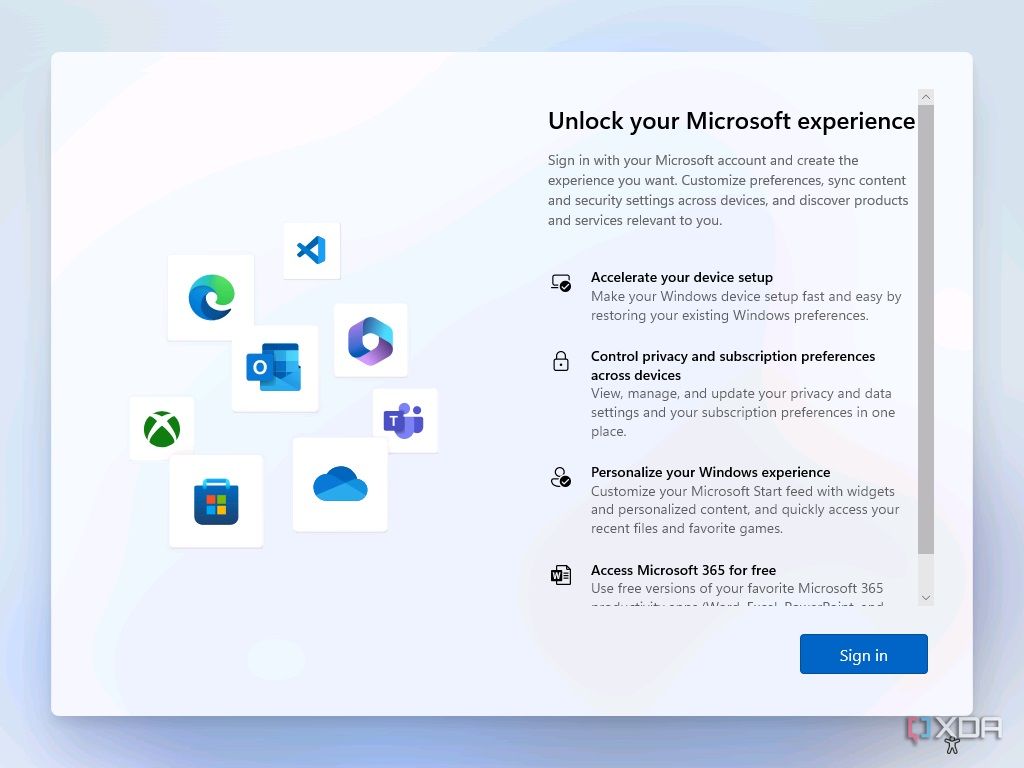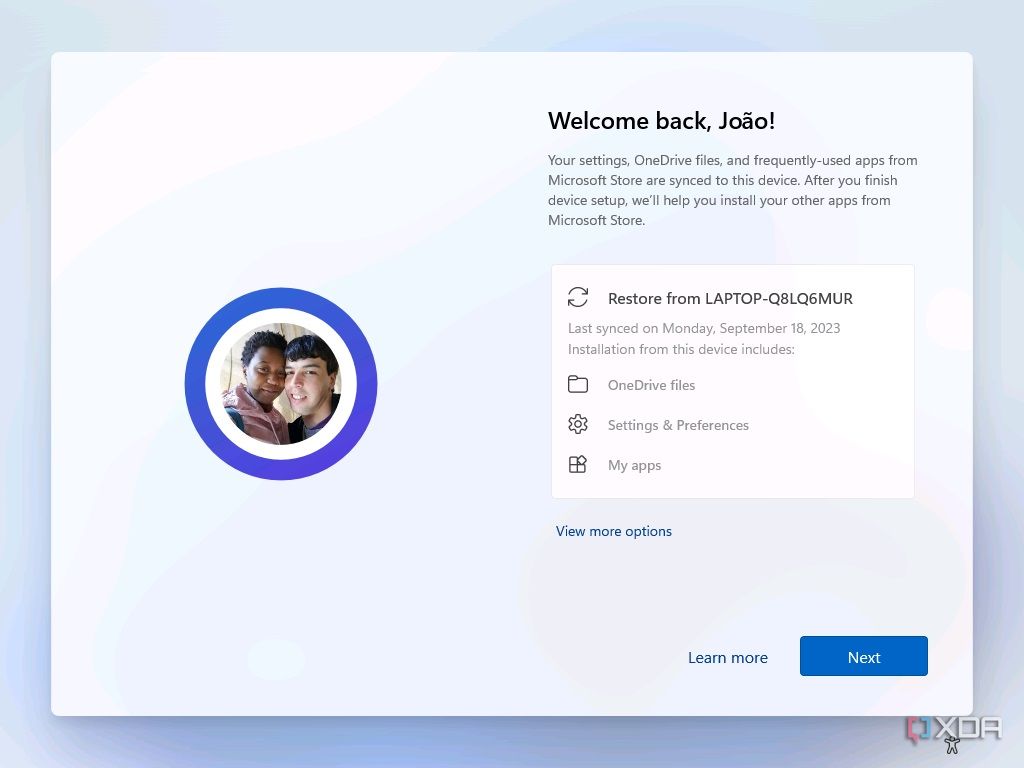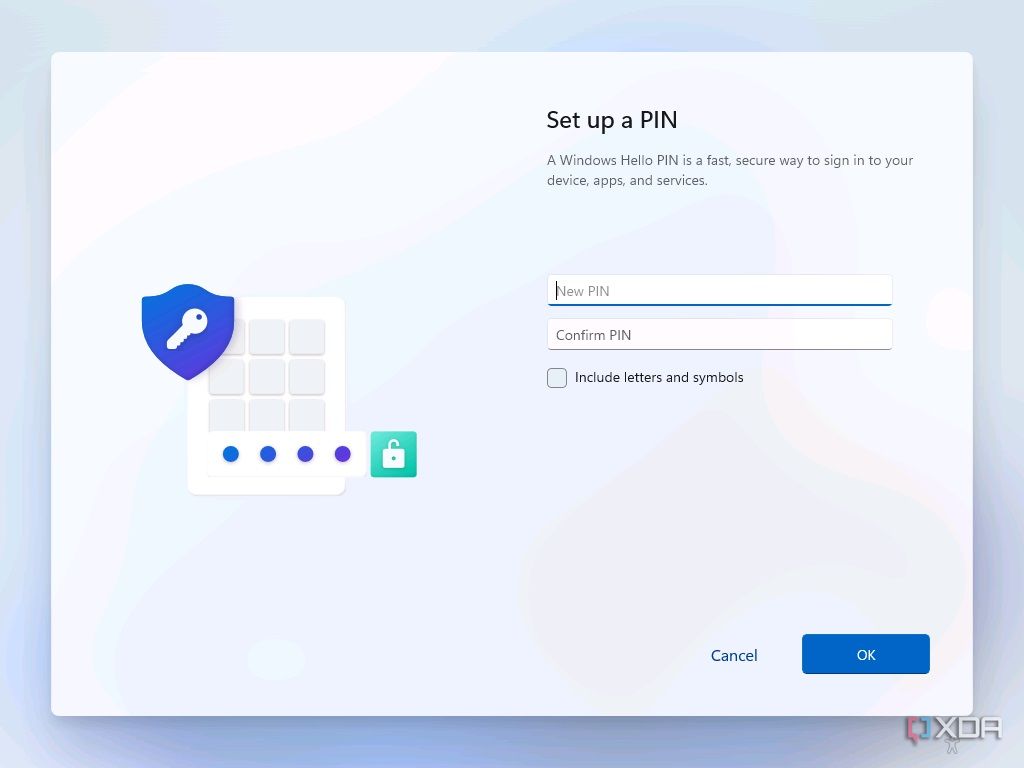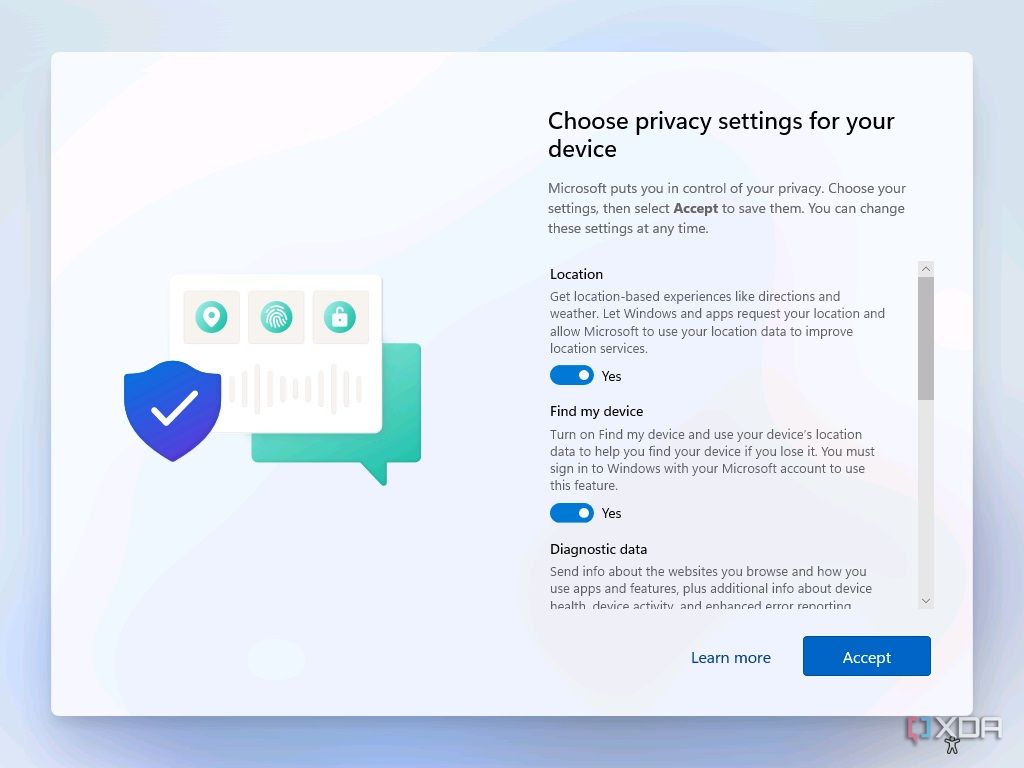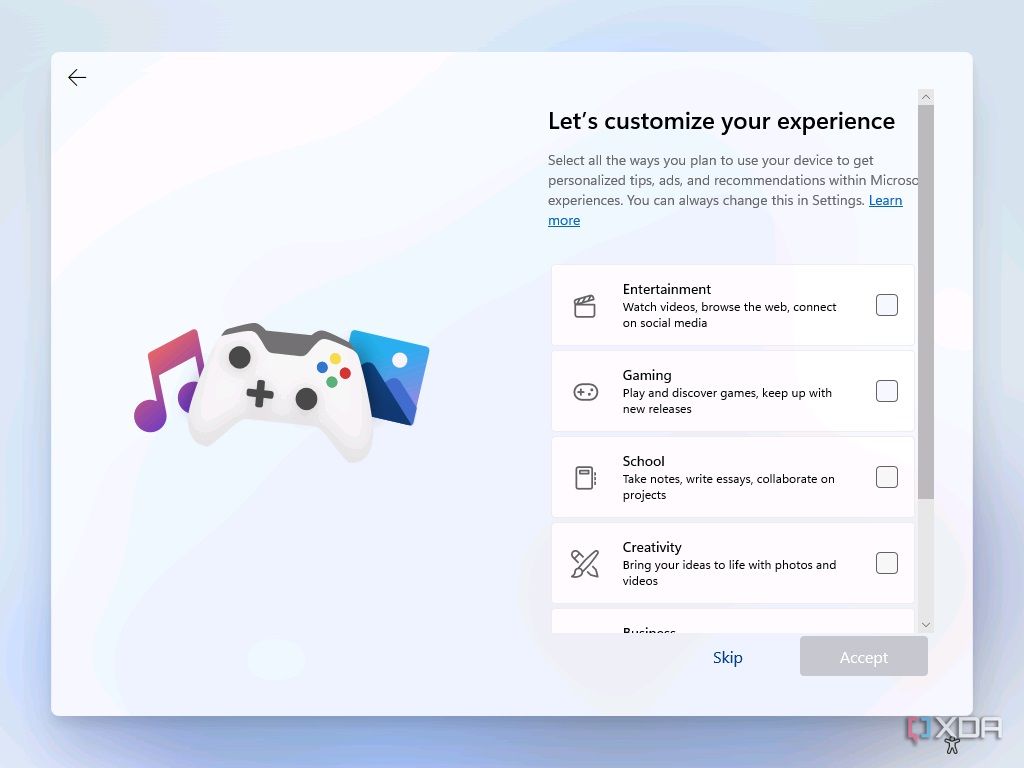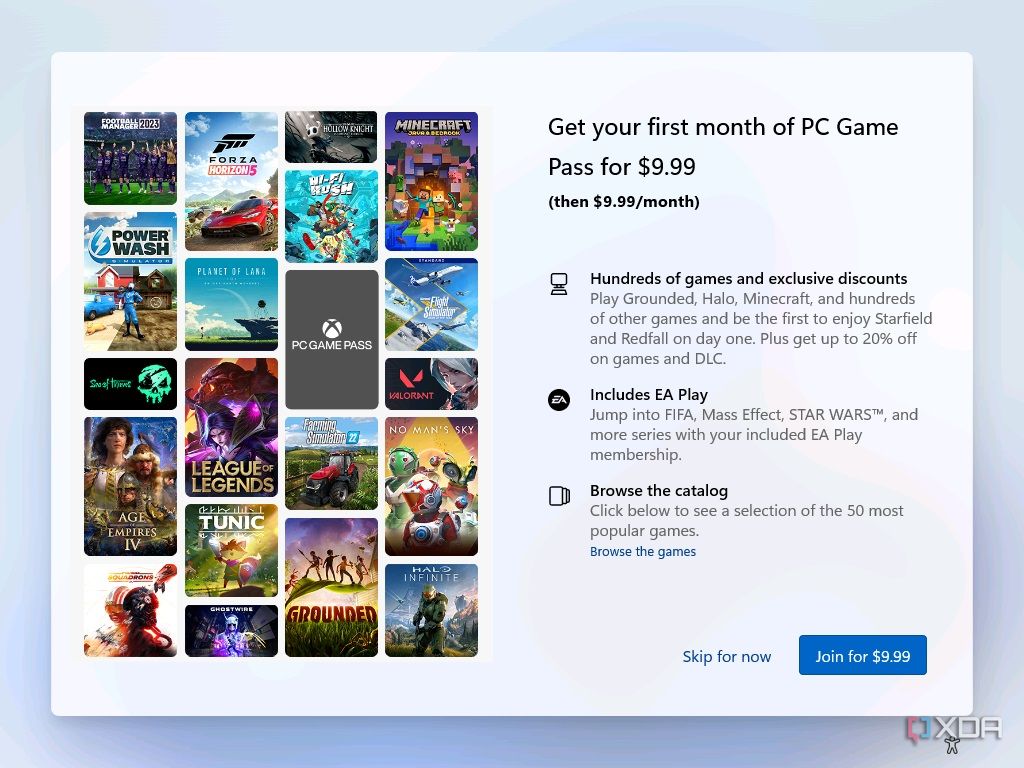Quick Links
Windows 11 has been out for nearly two years, but for many people, it's still news. After all, Windows 10 is still fully supported, and not everyone is eager to upgrade to Windows 11 for one reason or another. But if you've been holding out and you finally want to make the jump, we're here to help with that.
There are plenty of methods you can use to download and install Windows 11 on your PC, whether you're upgrading from Windows 10 or trying to start fresh. Let's take a look at all of them.
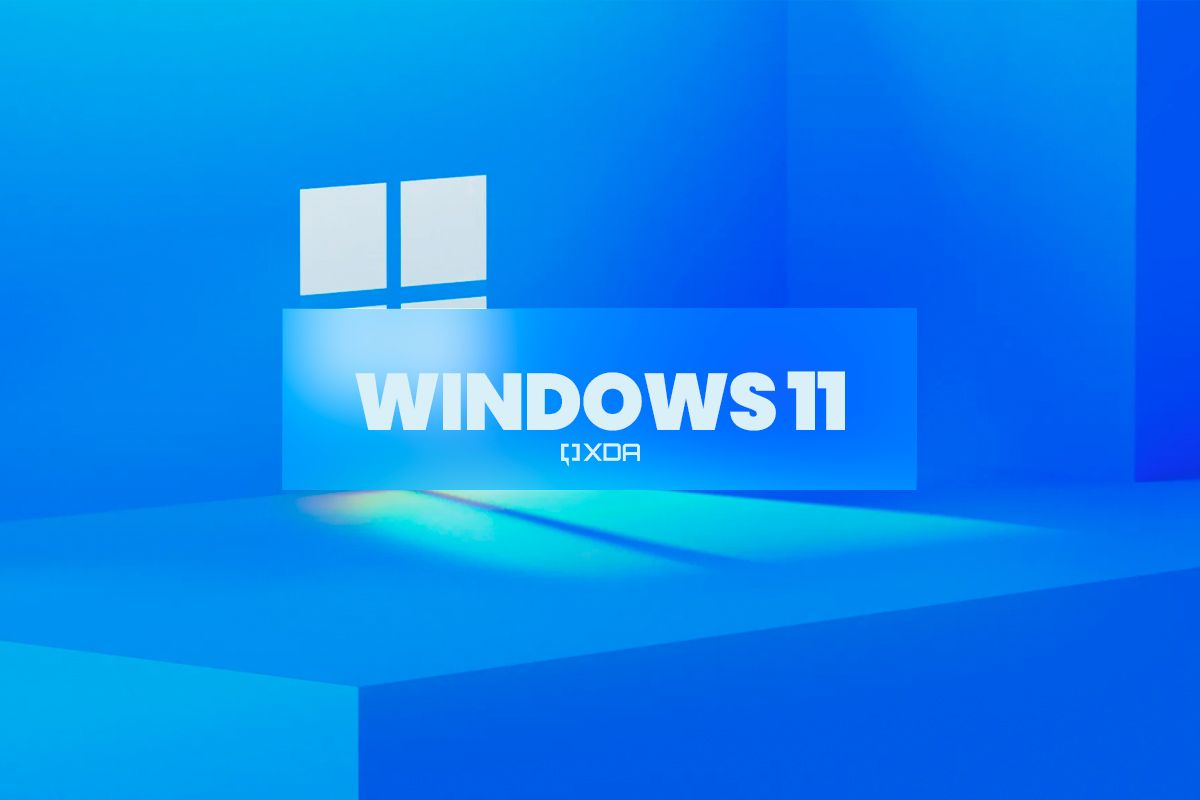
Windows 11: Everything you need to know
Windows 11 is the latest and greatest operating system from Microsoft, and it packs a ton of changes. Here's what you need to know.What you'll need
Before we get started, the first thing you'll want to do is make sure your PC meets the system requirements for Windows 11. These requirements include:
- A CPU on the list of supported processors (or any Intel, AMD, or Qualcomm processor launched after 2021)
- 4GB of RAM
- 64GB of storage
- TPM 2.0 module
- At least a 720p 9-inch display

Can my PC run Windows 11? Here are the system requirements
Microsoft has published the system requirements for its new Windows 11 operating system, and it requires a 64-bit dual-core processor.Aside from that, make sure you've backed up your files to a cloud service or an external storage device, like a flash drive or external SSD. For some of the methods below, you may also need a flash drive.
Download Windows 11 using Windows Update
The easiest way to download Windows 11 is through Windows Update. The vast majority of supported PCs running Windows 10 should be able to find Windows 11 this way. Just follow these steps:
- Open the Settings app.
- Go to the Update & Security section.
-
If your PC is supported, you'll see a big banner advertising Windows 11, and you'll have the option to download it right away.
This will download and install Windows 11 in the easiest way possible, and you won't have to set up anything after the installation. We'd recommend going this route if you can, but you have more options if this one isn't available.
Using the Windows 11 Installation Assistant
If, for some reason, the method above doesn't work, another easy option is to use the Windows 11 Installation Assistant. Here's what you need to do:
- Go to the Windows 11 download page.
-
Under Windows 11 Installation Assistant, click Download Now.
- Run the file you downloaded.
-
If your PC meets the Windows 11 requirements, you'll see a license agreement. Click Accept and install.
- Windows 11 will begin downloading, and you can then follow the steps to finish installing the update.
This will still upgrade your PC easily without any fuss, but it may be a more reliable option than using Windows Update. Your data should be left exactly where it is, so you can go about using your PC just like before.
Using the Media Creation Tool
Another official way to download Windows 11 is using the tools Microsoft provides for downloading Windows 11 manually. The most versatile way to do this is using the Media Creation Tool, as you can use it to upgrade your current PC or create installation media for another PC, which you can use if you're offline or have slow internet later. Here's what to do:
- Go to the Windows 11 download page.
-
Under Create Windows 11 Installation media, click Download Now.
Alternatively, you can download an ISO directly from the website under Download Windows 11 Disk Image (ISO). If you do, skip to step 7.
- Run the file you've just downloaded.
- Accept the terms and conditions.
-
Choose the language and edition settings you want for your Windows 11 installation. By default, it chooses the correct settings for your PC, but you can change them if you're creating installation media for another PC.
-
Choose whether you want to create an ISO file or a bootable USB flash drive.
If you want to perform a clean install using bootable USB media, select the USB flash drive you want to use and click Next. You can skip to the How to install Windows 11 using USB installation media sub-section below.
- The download will begin and you'll have your ISO file saved in the folder you chose.
-
On the computer you want to upgrade, double-click the ISO file, and then run the setup file inside.
- Follow the steps on screen to upgrade your PC to Windows 11 or to reinstall the OS.
How to install Windows 11 using a USB drive
If, instead of an in-place upgrade, you want to perform a clean install or format your PC, you'll need to create a bootable USB drive. You can do that directly using the Media Creation Tool, or use the ISO you've downloaded using the steps above and a program like Rufus. This method also lets you install Windows 11 on hardware that's not officially supported.
How to create installation media
If you want to create a USB installation media you can use for other PCs or for a clean installation, you'll need a program like Rufus. This can take your ISO file and flash it onto your flash drive so you can boot from it. Before you get started, make sure you don't have any important files on the USB drive, since they'll be deleted during the process. The USB drive will also need to have 8GB or more of capacity. Once that's taken care of, here's what you need to do:
- Download Rufus and install the program (or download the portable version).
- Plug in your USB drive and run Rufus. Make sure no other USB drives are plugged in.
-
Click SELECT, and find the ISO file you downloaded before. All the other options will be filled in automatically.
- Click START.
-
You'll see a window letting you enable certain options. By default, it will disable checks that might prevent Windows 11 from installing on unsupported PCs. You shouldn't have to change anything here.
- Click OK and wait for the process to finish.
How to install Windows 11 using USB installation media
Installing Windows 11 from within Windows is a very simple process. Once you have created installation media, you can simply launch the setup file in your flash drive, then click through the installation process. Once the installation process is finished, you'll be running Windows 11. If you want to do it this way, it's pretty much the same as having an ISO file.
However, if you want a clean experience and set up your Windows 11 PC as a brand-new machine, you can do a clean installation. This means deleting all the data on your drive, but it will allow you to have the cleanest experience. Make sure you've backed up all the data you need before starting. With your USB installation media plugged in, follow these steps:
- Go to Settings -> Update & Security -> Recovery.
- Under Advanced startup, click Restart now.
-
In the menu that shows up, click Choose a device, then click your USB drive.
-
From here, you'll be taken to the installation environment. Choose your language and keyboard settings, then click Next,
- Click Install Now.
-
Enter a product key or, if your PC already has a license, click I don't have a product key. In this case, you'll need to select the right license for your PC in the next screen.
- Check the box to accept the license terms and click Next.
-
In the next screen, you'll need to choose Custom: Install Windows only (advanced).
-
You'll see the list of drives and partitions on your PC. If it's a brand-new SSD, you may just see one partition or unallocated space.
-
If you have any, delete all existing partitions on Drive 0. You'll end up with a single block of unallocated space as seen above.
This will delete all data on your drive. Make sure you've backed up beforehand.
- Choose the unallocated space on your drive and click Next.
Once the installation finishes, you'll be taken to the out-of-box experience (OOBE). This is what you see when setting up a new PC for the first time, or after a reset.
Setting up Windows 11
To get ready to use Windows 11, you'll need to get through a few steps. This part of the process is constantly evolving, so you may see a couple of changes here and there, but the process will generally be as follows:
-
First, you'll need to choose your region and keyboard layout.
-
Accept the license terms, then you'll get the chance to name your PC.
-
You'll then be asked to sign in with a Microsoft account. If you used Rufus to create an ISO with the default settings, you can skip this, but it's usually mandatory.
-
If you've previously backed up your data on another device, you'll have the option to restore a backup. Choose a previous device or set up as a new device.
A restore screen in Windows 11 after the user has signed in with their Microsoft account
-
Once you've signed in, you can set up Windows Hello facial or fingerprint recognition on supported devices. You'll have to set up a PIN, too.
-
Next up, you have a few privacy settings to go through. These include allowing apps to use your location, how much diagnostic data you want to send to Microsoft, or whether apps can use your advertising ID. Choose the settings that suit you, then click Next.
-
After that, you'll be asked to choose the primary usage for your PC, which can be used to customize your experience, then click Next. You can also choose nothing and click Skip here.
- You may be asked whether you want to sync your folders to OneDrive, but only certain editions allow this. On Windows 11 Home, syncing will be enabled by default.
-
You may also see some upsells from Microsoft to try to apply certain web browser and search settings (as in, use Edge and Bing as the default), or recommending PC Game Pass. You can skip these if you want to.
- After a brief setup period, you'll be taken to the Windows 11 desktop.
Installing Windows 11 is worth it
If you're wondering whether you should install Windows 11 or not, our general advice is that if your PC supports it, the upgrade is totally worth it. Windows 11 has a great new UI that looks much nicer than Windows 10, plus a lot of new features make this a worthwhile upgrade for almost anyone. Plus, with Windows 10 running out of support in 2025, Windows 11 will be pretty much required if you want your PC to stay safe in the long run.
